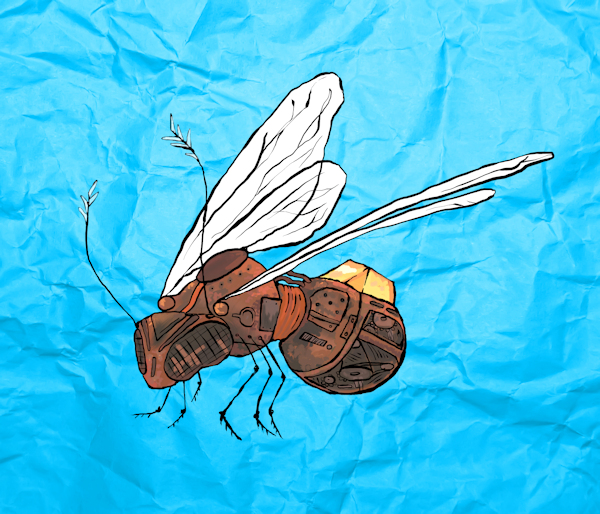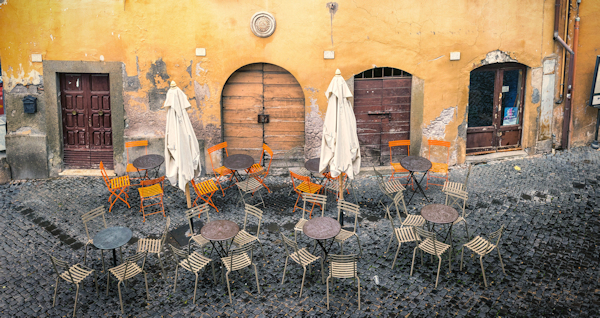 December was a really fun month for us nerds here at Fantasy-Faction. In October 2020, we had a call for microfiction submissions from our existing pool of contributing writers as a present for all of you. And as one of the writers who submitted a piece—“The Clockwork Bee”—it was a lot of fun! This wasn’t my first stab either. I actually got into writing flash fiction about four years ago when I saw a call for submissions from a speculative fiction anthology. It asked writers to pen 300-word stories, and at first I thought that was nuts. A whole story in 300 words? You’ve got to be kidding! But then I tried it out…and discovered that it was really fun!
December was a really fun month for us nerds here at Fantasy-Faction. In October 2020, we had a call for microfiction submissions from our existing pool of contributing writers as a present for all of you. And as one of the writers who submitted a piece—“The Clockwork Bee”—it was a lot of fun! This wasn’t my first stab either. I actually got into writing flash fiction about four years ago when I saw a call for submissions from a speculative fiction anthology. It asked writers to pen 300-word stories, and at first I thought that was nuts. A whole story in 300 words? You’ve got to be kidding! But then I tried it out…and discovered that it was really fun!
After that first challenge, I was hooked. I tend to write novel-length works so taking a quick splash in a fictional world instead of those deep dives for novels is lovely. It’s a weight lifted because you know you’re only going to be in that world and that character’s point of view for a short amount of time. I actually write flash fiction now just to take breaks from my longer works.
What is flash fiction?
In case you don’t know, flash fiction is a genre of fiction described as a very short story. A very, very short story. Brevity is key when writing flash fiction. You’re trying to tell a story with as few words as possible. Unlike short stories—which commonly run 3,000–7,000 words—a flash fiction piece usually ranges between 1,000 words to just 6. You read that right. Chances are, if you’re ever looked up flash fiction, you’ve seen a pretty famous 6-word story attributed to Ernest Hemmingway:
It says a lot in only six words, right? Historically speaking, flash fiction has many other names it goes by, like microfiction, short-short stories, sudden fiction, nanofiction, napkin fiction…the list goes on. This type of fiction has been popular throughout the ages—reaching as far back as ancient Rome, the medieval times, and even Aesop fables like “The Hair & The Tortoise”.
The best part is flash fiction can be written in any genre you want: romance, horror, sci-fi, fanfiction. Anything! It’s pretty cool. Don’t worry, you don’t need to start with the 6-word story, because I know how intimidating that can be. A dribble is 50 words or less, so maybe start there! If you want some more room, try the sudden fiction for around 750 words. For even more wiggle room the standard flash fiction story is usually around 1,000 words. Keep in mind, 1,500 words is the cut-off point for flashes, so be careful when you get up to that word count.
I wanted to share a few shorter speculative flash fiction pieces I like, to get your creative mind in gear and make sure you have some examples to call back to.
We’ll start with Johnathan Lethem. He wrote flashes called Elevator Pitches, which featured in The New Yorker in 2017.
An elevator appears where there never was an elevator before. The doors never open. Some people start a religion based on what might be inside the elevator. Others just take the stairs.
I like this one because it’s strange and interesting, the ending was unexpected, and it made me laugh.
I found this next one while scrolling Twitter. Twitterature is a thing, a type of flash fiction, and it’s 280 characters long. This one was posted this year by the username A Small Fiction:
She stepped outside and found that everyone had gone. She was alone. Snooping helped, at first. Gathering orphaned secrets. Building a raft of the emotional driftwood left behind. But in the gathering she grew too full of echoes. Too heavy with shadows. And sank.
I like this one because it’s abstract and sad in a way and speaks to the loneliness everyone feels sometimes.
What scenes work best in flash fiction?
Flash fiction is a whole compressed story with a beginning, middle, and end. It’s a pinhole in the fabric of a character’s life, a snapshot but one that hints at a bigger story before and after that one moment. So, because of that, you’ll want to pick a scene—one scene—that makes the most impact for your readers.
My suggestion? Start in the middle. It doesn’t necessarily have to be high action, if you’re not writing that kind of story, but it has to be some kind of conflict. The conflict is usually one of two things: 1) the conflict can be a giant overarching idea that everyone can relate to—like death, war, lost love, or even loneliness. Or 2) the conflict can be hyper specific to your main character, a personal, internal conflict. For example, “The Clockwork Bee” started smack dab in the middle of the story with my main character trying to find trinkets to take with her during her last moments. There was no set up, no fluff—I put the reader directly into my girl’s point-of-view as she was contemplating her seemingly inevitable doom. Basically, you have to jump into the real center of the story…what you want the readers to know and care about…because there’s no time for anything else.
Stick with one or maybe two main characters and focus on a single issue of that character’s life. Because of the shortness of the story, your character doesn’t have to change drastically. There isn’t enough space for a huge sweeping character arc you can get in a novel, or even the smaller character arcs from short stories. If you focus on one single issue—say lack of air, or a random elevator that doesn’t open—and resolve that within the story, maybe drawing in some deeper meaning or the promise of a hopeful future. It’s one scene in this character’s life and in their world.
And don’t forget about worldbuilding! You don’t have much time to get your readers really settled in, so only show what really matters. Is it a coffee shop? The bridge on a spaceship? In an old, twisted tree? As a writer, you need to make sure you have a clear idea of where your characters are because you won’t have many words to describe it for your readers. Consider making the surroundings a part of the story. For example, for “The Clockwork Bee” I was able to make the spaceship (setting) and the lack of magic (worldbuilding) the issue because they were running out of breathable air.
Now what is this about the title?
Okay so this is a bit cheating, and it really depends on where you’re submitting the story, but in more cases than not, they don’t count the title in the story’s word count. So, utilize the title to its fullest extent! Give the readers a sense of what the story is going to be about, or something important in the story, or what the main conflict is. My story was titled “The Clockwork Bee”, which shows the bee would be important, so the readers knew to look out for it. Do the same for your titles—make them go to work!
I know flash fiction is challenging and sometimes intimidating, but it’s a unique style of writing. One that helps to sharpen your skills and drill down to the meat of a story and characters. I’d highly suggest you give it a whirl. Now go out and conquer the blank page! Well half of it anyway.
Title image by pearly-peach.






